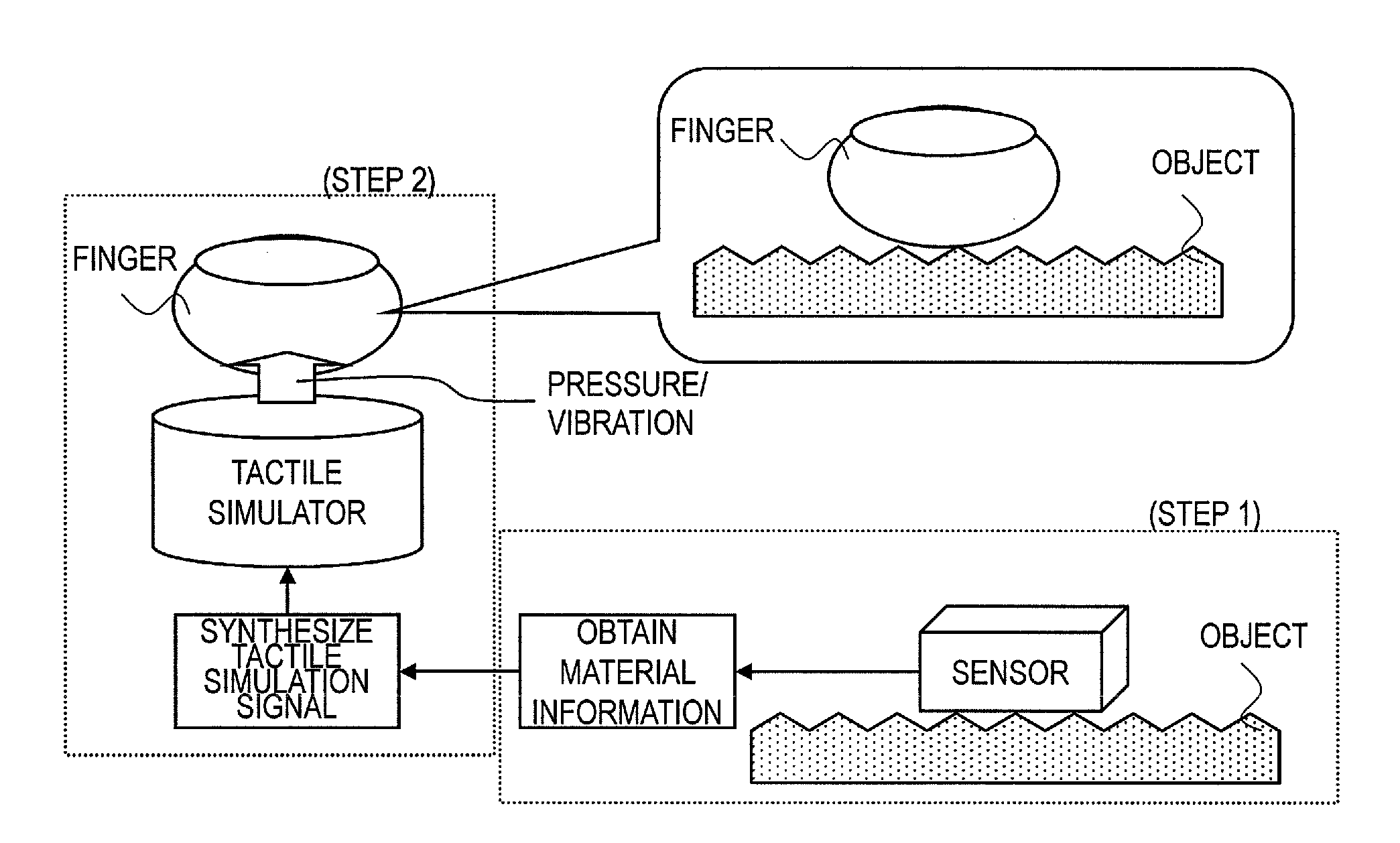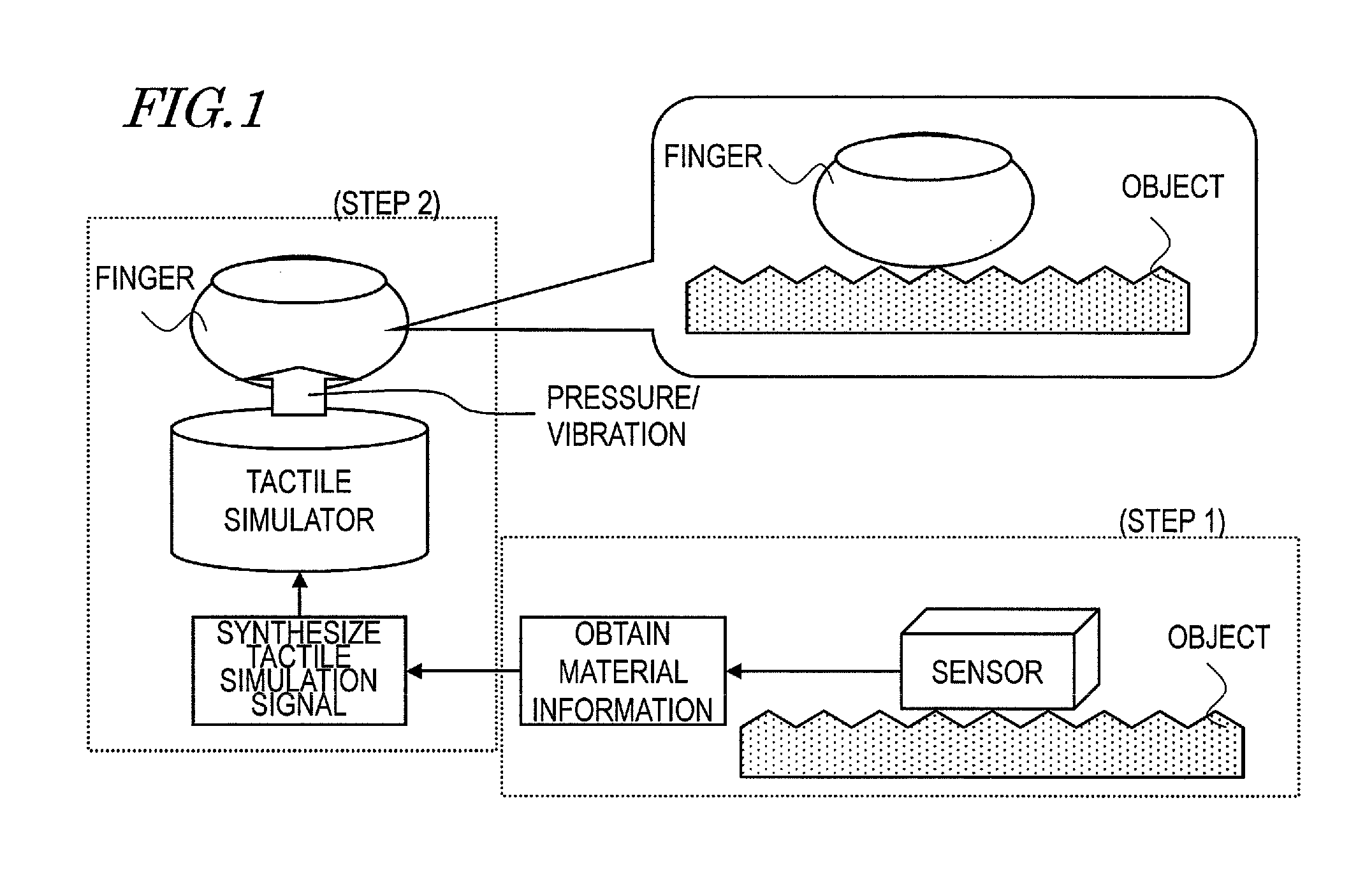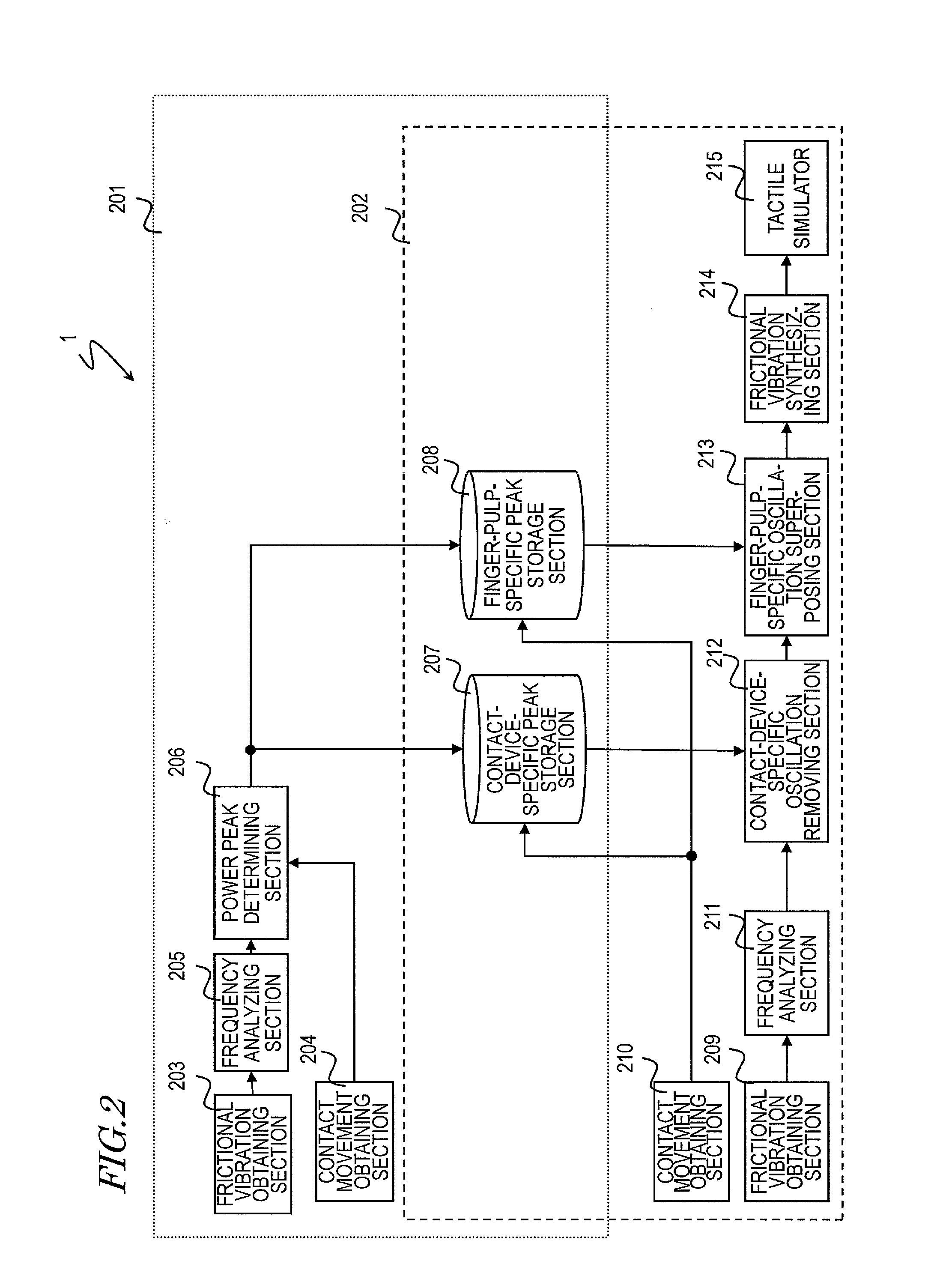Tactile feedback method and system, computer program and storage medium that stores the computer program
a technology of tactile sensation and computer program, applied in the field of simulating tactile sensation, can solve the problems of limited types of tactile sensation that cannot be simulated, cannot be natural, and can only be simulated of limited kinds of objects, so as to achieve natural and realistic tactile sensation
- Summary
- Abstract
- Description
- Claims
- Application Information
AI Technical Summary
Benefits of technology
Problems solved by technology
Method used
Image
Examples
embodiment 1
[0079]As a Method for Performing the Basic Function of the present invention, a signal conversion method and a frictional vibration generating method will be described as a first preferred embodiment of the present invention. According to this preferred embodiment, the patterns in which the contact produces frictional vibrations are learned in advance, thereby causing a realistic tactile sensation of any material on a person's finger pulp.
[0080]FIG. 2 is a block diagram illustrating a tactile feedback apparatus 1 as a first preferred embodiment of the present invention. This tactile feedback apparatus 1 has two major sections, which will be referred to herein as a power peak learning section 201 and a tactile feedback performing section 202, respectively.
[0081]In accordance with Equations (5) and (6) in which the frictional vibration produced by rubbing is supposed to be equivalent to the product of a signal source and a transfer system, the power peak learning section 201 determine...
embodiment 2
[0163]A tactile feedback apparatus as a second specific preferred embodiment of the present invention uses not only all of the basic components already described for the first preferred embodiment of the present invention but also multiple combinations of contact devices for getting a feel of the material and contact-device-specific peak information about those contact devices. Thus, the tactile feedback can be made by changing the contact devices or the contact-device-specific peak information to use according to the situation of the material, of which the feel should be simulated.
[0164]FIG. 15 is a block diagram illustrating a tactile feedback apparatus 2 as a second preferred embodiment of the present invention.
[0165]In FIG. 15, any component also included in the tactile feedback apparatus shown in FIG. 2 and having substantially the same function as its counterpart is identified by the same reference numeral and a detailed description thereof will be omitted herein. Just like th...
embodiment 3
[0177]A tactile feedback apparatus as a third specific preferred embodiment of the present invention not only uses all of the basic components already described for the first preferred embodiment of the present invention but also collects and stores multiple sets of finger-pulp-specific peak information for finger pulps with mutually different physical properties. And when a particular material feel should be displayed to a given finger pulp on the tactile simulator, the best one of the multiple sets of finger-pulp-specific peak information is used selectively for tactile feedback according to the property of the given finger pulp. As a result, it is possible to prevent the person from finding the tactile sensation caused on his or her finger pulp unnatural due to a disagreement in finger pulp property.
[0178]FIG. 17 is a block diagram illustrating a tactile feedback apparatus 3 as a third specific preferred embodiment of the present invention.
[0179]In FIG. 17, any component also inc...
PUM
 Login to View More
Login to View More Abstract
Description
Claims
Application Information
 Login to View More
Login to View More - R&D
- Intellectual Property
- Life Sciences
- Materials
- Tech Scout
- Unparalleled Data Quality
- Higher Quality Content
- 60% Fewer Hallucinations
Browse by: Latest US Patents, China's latest patents, Technical Efficacy Thesaurus, Application Domain, Technology Topic, Popular Technical Reports.
© 2025 PatSnap. All rights reserved.Legal|Privacy policy|Modern Slavery Act Transparency Statement|Sitemap|About US| Contact US: help@patsnap.com



